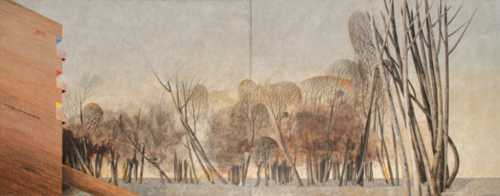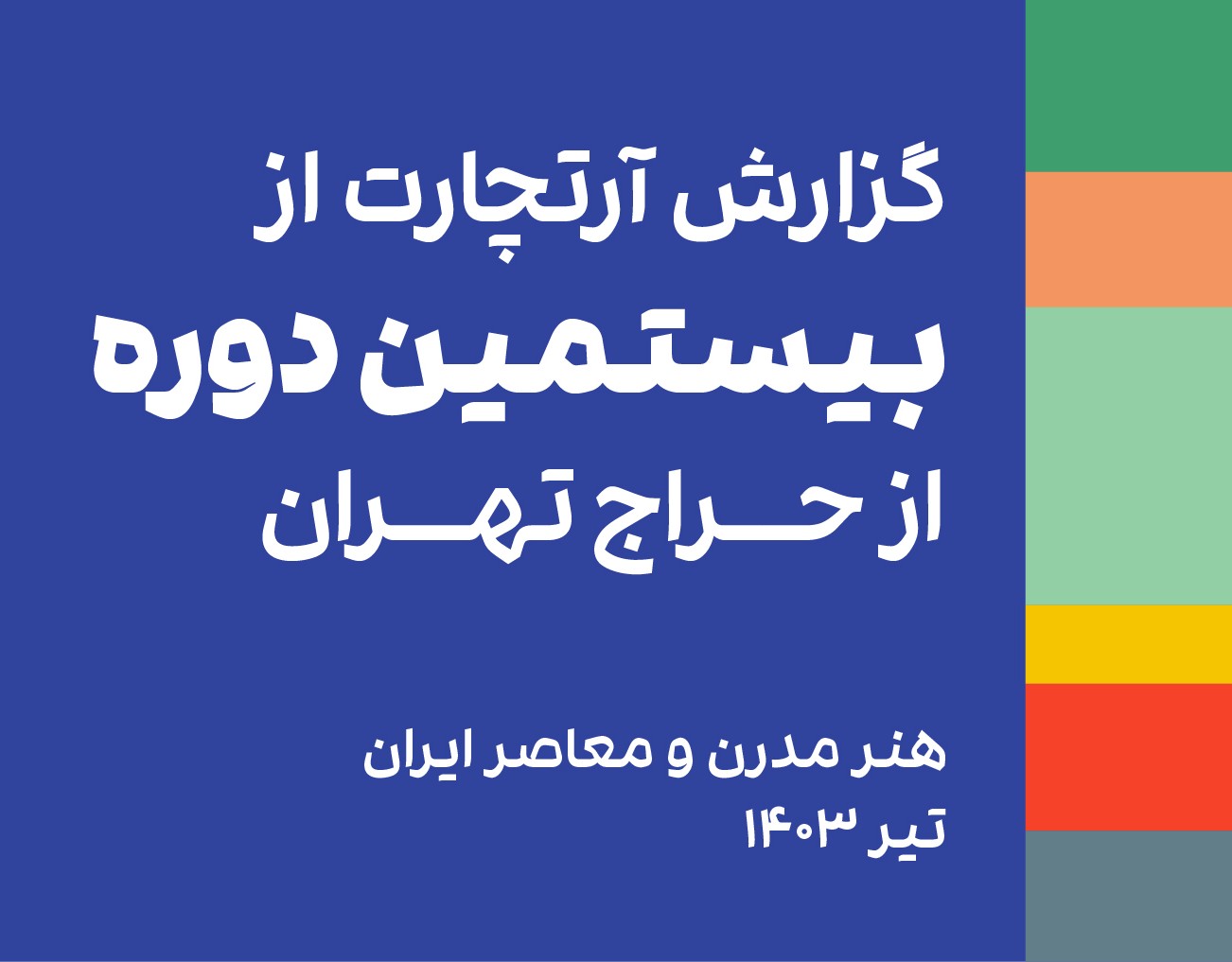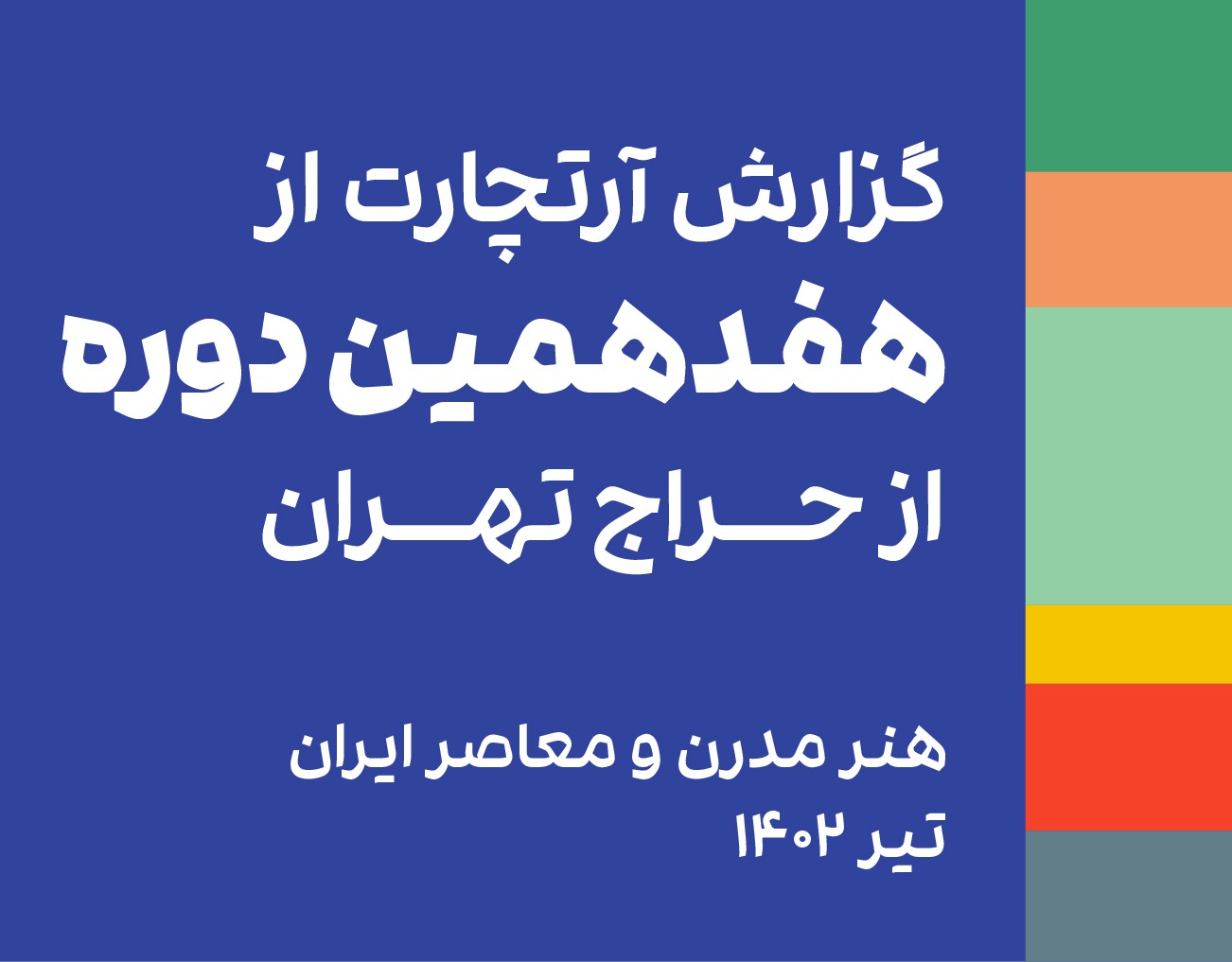About Rezvan Sadeghzadeh
Rezvan Sadeghzadeh's paintings reflect a dual influence: they draw from Iranian painting while also being shaped by Eastern artistic traditions. Born in the village of Shiran in Ardabil, this contemporary artist embarked on his artistic journey after completing high school in 1984. He gained admission to Isfahan Art University, where he earned a bachelor's degree in painting. During his university years, he spent a semester as a guest student at Tehran University of Arts and later pursued graduate studies at the same institution, focusing on Decorative Arts. Under the guidance of esteemed professors such as Mehdi Hosseini, Javad Hamidi, and Mohammad Ebrahim Jafari, Sadeghzadeh further honed his skills. While working towards his master's degree, he held a position as a "public relations art expert" at Tarbiat Modares University, which he relinquished upon completing his studies. Sadeghzadeh debuted his first solo exhibition at Golestan Gallery in 1992, marking the beginning of a prolific artistic career. In addition to participating in various biennials of Iranian contemporary painting, he has showcased his work in numerous group and solo exhibitions across Iran, the United States, England, Japan, and other countries. His achievements include winning the "Third Prize" in the "My Country" international competition held in London in 2000 and being selected for two painting biennials in the Islamic world.
Alongside his artistic endeavors, Sadeghzadeh has also dedicated himself to teaching art. Since 2010, he has served as a faculty member at Tehran University of Art. Rouyin Pakbaz, commenting on Sadeghzadeh's artistic style, describes his paintings as featuring women adorned in flowery dresses, along with occasional depictions of stones and plants, all meticulously rendered against soft-colored backgrounds on large canvases. These elements, imbued with symbolic significance and deeply rooted in both Far Eastern and Iranian painting traditions, serve as reflections of contemporary social concepts. Sadeghzadeh himself has remarked that Eastern artistic traditions provide a fitting means for expressing his emotions and inner spirit. In another phase of his career, Sadeghzadeh delves into wall themes, often covering large canvases with layers of clay. Amidst the vast expanse of these walls, remnants of his previous paintings, such as trees, people, and abstract figures, occasionally emerge from the corners. These walls serve not only as visual textures but also evoke the geometric compositions reminiscent of the walls depicted in Teymurid paintings.
Mehdi Hosseini underscores the influence of Eastern traditions, particularly Dao and Zen, in Sadeghzadeh's artworks, noting that stillness and silence constitute integral components of his pieces. He describes the profound impact of silence, which compels viewers to contemplate solitude and introspection.
The Most Expensive Artwork
At Auctions
First Attendance
25 November 2010
# Attendance
16
# Artworks
16
Average Realized Price
11,701 USD
Average Min Estimate
5,786 USD
Average Max Estimate
8,289 USD
Sell-through Rate
93.75%
Average Growth of Artwork Worth
72.163%
Timeline
The 24th Tehran - Contemporary Iranian Art auction
3 October
The 23rd Tehran - Modern and Contemporary Iranian Art auction
22 May
Renewed exhibition
7 March
Treasure 6 exhibition
10 January
Landscape Plateau exhibition
13 December
Orchards and Birds exhibition
6 December
FINE FOLK OUTSIDER auction
18 November
A Tree-Rich Garden exhibition
15 November
Gargas exhibition
23 August
Resize exhibition
16 August
Darrous, 34 exhibition
2 August
The 20th Tehran- Modern and Contemporary Iranian Art auction
5 July
Rezvan Sadeghzadeh Artworks exhibition
14 June
Treasure 4 exhibition
24 May
Human Body exhibition
25 August
The 17th Tehran Modern and Contemporary Iranian Art auction
18 July
Didar with artists exhibition
14 April
resize exhibition
13 April
A Nostalgic Glimpse exhibition
26 August
Art Closer Than Ever exhibition
26 August
Printmaking Group Exhibition exhibition
19 August
Tehran- 16th- Iranian contemporary art auction
1 July
To be a Tree exhibition
13 May
Resize exhibition
13 May
Mohammad Siyah-Qalam Award 1 exhibition
22 April
Manufact exhibition
25 March
Nowruz Festival of Rivers exhibition
10 March
Last Chapter exhibition
25 February
Her Majesty, Nature exhibition
25 February
Process exhibition
25 February
The First Fertile Element exhibition
18 February
Group Exhibition exhibition
10 September
The 14th Tehran- Contemporary Iranian Art auction
12 August
The Discourse of Persian and Contemporary Art exhibition
4 August
The 13th Tehran- Modern and Contemporary Iranian Art auction
15 January
No.4 auction
9 June
Show and Sell of Works for the Benefit of Corona Patients exhibition
24 April
+98 exhibition
21 February
دوازدهمین دوره حراج تهران auction
17 January
White Black Gray exhibition
13 December
A Group of Ardabil Contemporary Painters exhibition
1 November
دهمین دوره حراج تهران auction
11 January
Influence exhibition
9 November
The Fourth Annual Auction of Behnam Daheshpour Gallery exhibition
28 June
هشتمین دوره حراج تهران auction
12 January
Opening exhibition
5 February
The Young Collectors auction
10 February
The Young Collectors auction
27 May
The Young Collectors - Art from the Middle East auction
30 April
Design, Art Contemporain, Photographie Contemporaine, Art Iranien auction
25 November
Articles
Report on the 20th Tehran Auction: The Seventh Auction of Modern and Contemporary Iranian Art 10 July 2024
The Tehran Auction commenced its operations by showcasing and selling modern and contemporary Iranian art, sustaining this focus for four consecutive sessions from 2012 to 2015. The 20th edition of the Tehran Auction, held on July 5, 2024, also centered on modern and contemporary Iranian art. During this session, 115 works by 111 artists were put up for auction, with 107 pieces succ...
۱7th Tehran Auction Sales Report 26 July 2023
The 17th Tehran auction: modern and contemporary, was held on Friday July 21st, 2023 at Parsian Azadi Hotel. This auction achieved a total sale of 214 billion tomans equivalent to 4.3 million dollars, which was a growth of 77.8% compared to the previous period. Artchart has observed the 17th Tehran auction in the upcoming report.


